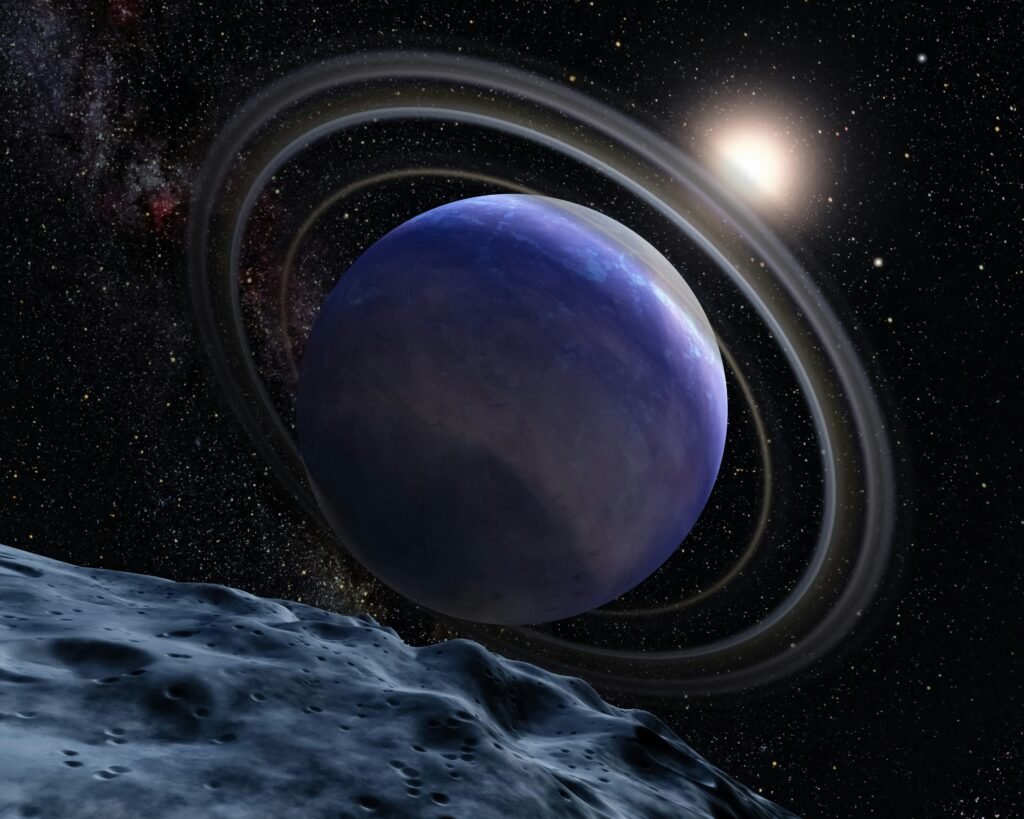Imagine a tiny spacecraft leaving Earth on a long journey to Mars. There are no roads, signs, or traffic lights in space, just darkness and stars. Yet, somehow, the spacecraft knows exactly where to go. This isn’t magic, it’s a smart and careful process called planetary navigation. Scientists and engineers use special tools and knowledge to guide spacecraft through space.
In this article, navigate between planets in space, we’ll explain how they travel between planets, stay on course, and what tools help them along the way.
What Is Planetary Navigation?

Planetary navigation means finding the right path for a spacecraft to travel from one planet to another. On Earth, we use maps, roads, and GPS to go from place to place. But in space, there are no roads or signs. Instead, engineers use math, computers, and the laws of physics to guide spacecraft.
This kind of space navigate is used in the US and the UK space research by agencies like NASA and the UK Space Agency. These space experts help plan space missions to the Moon, Mars, and even farther.
Why Is Space Navigation Important?
Space is huge and mostly empty. If a spacecraft is just a little off track, it could miss the target planet by thousands or even millions of kilometers. Learning how to navigate in space is very important for astronauts, scientists, and anyone working in space exploration.
Good navigate helps a spacecraft:
- Reach the correct planet
- Use less fuel
- Avoid space debris and other dangers
- Stay in contact with Earth
How Spacecraft Travel Between Planets

Here’s how engineers guide a spacecraft through space:
1. Know the Orbits
All planets move around the Sun in paths called orbits. These orbits are predictable, so scientists know where each planet will be at any time. They wait for the best moment, called a launch window, when the planets are closest.
2. Plan the Trajectory
A trajectory is the path a spacecraft follows through space. Engineers use math to plan this path. They often use a Hohmann transfer orbit, which helps the spacecraft go from one planet to another using the least fuel.
3. Use Gravity
Sometimes, spacecraft use a planet’s gravity to help them speed up or change direction. This trick is a gravity assist. It helps save fuel and time.
4. Make Small Corrections
During the journey, the spacecraft may need to adjust its direction. Small engines help with this. These are called mid-course corrections.
Tools for Space Navigation
Since GPS doesn’t work in deep space, the spacecraft needs special tools to know where they are and where it’s going. These tools include:
- Star Trackers: Cameras that look at stars to find the spacecraft’s position
- Sun Sensors: Tools that detect where the Sun is
- Gyroscopes: Help the spacecraft stay stable and turn properly
- Communication Systems: Let scientists send and receive data from Earth
NASA and Planetary Navigation

In the United States, NASA is a global leader in interplanetary navigate. With missions like Voyager, Perseverance, and Artemis, NASA has developed some of the most advanced space navigate technologies in the world.
One of NASA’s most important tools is the Deep Space Network (DSN), a group of large antennas spread across the globe. DSN receives signals from spacecraft millions of kilometers away. Another key technology is atomic clocks. These exact clocks help determine a spacecraft’s position based on how long it takes for signals to travel. In space travel, timing is everything; even a delay of milliseconds can throw off a mission.
Challenges in Navigating Space
Even with smart tools, navigate space is not easy. There are many challenges:
- Long Distances: It takes months or years to reach another planet
- Communication Delays: Messages take time to travel between Earth and the spacecraft
- Space Conditions: Spacecraft face dangers like radiation, extreme temperatures, and space dust
That’s why the spacecraft must be strong, smart, and ready for anything.
Upcoming Advances in Navigating Space
As space exploration grows, planetary navigate technology is also evolving. Here’s what the future may hold:
Self-Navigating Spacecraft
New spacecraft are being designed to make decisions on their own using onboard computers. This is especially useful when there's a long delay in communication from Earth.
AI and Smart Cameras
Artificial intelligence is being used in combination with visual sensors to help spacecraft see and react to their environment, like avoiding obstacles or adjusting course in real-time.
GPS for the Moon and Mars
Just as Earth has GPS satellites, scientists are planning to create GPS-like systems around other celestial bodies. Future astronauts could use them to navigate the Moon or Mars, just like drivers use GPS on Earth.
Your Journey Doesn’t Stop Here
If you’re curious about space, here are a few easy ways to learn more:
- Online Courses: Take free or paid courses on websites like Coursera, edX, or Khan Academy. Some even offer lessons from NASA experts.
- Books and Videos: Read beginner-friendly books or watch space documentaries on YouTube.
- Join Clubs: Join a science or space club at school or online. These clubs often work on fun space projects.
- Try Projects at Home: You can build model rockets or use simple tools to learn how spacecraft move.
Final Thoughts
Navigate between planets in space is one of the most fascinating achievements of modern science. It combines physics, computer science, engineering, and creativity to make the impossible possible.
With tools like star trackers, gyroscopes, atomic clocks, and deep space communication, we can now guide spacecraft millions of kilometers away with incredible accuracy. Organizations in the US and UK, especially NASA, are leading this progress, making interplanetary travel more efficient and exciting. Whether you're dreaming of becoming a space scientist or just fascinated by the idea of planetary travel, now is a great time to start learning. The universe is vast, but with the right knowledge, navigating it is within our reach.








